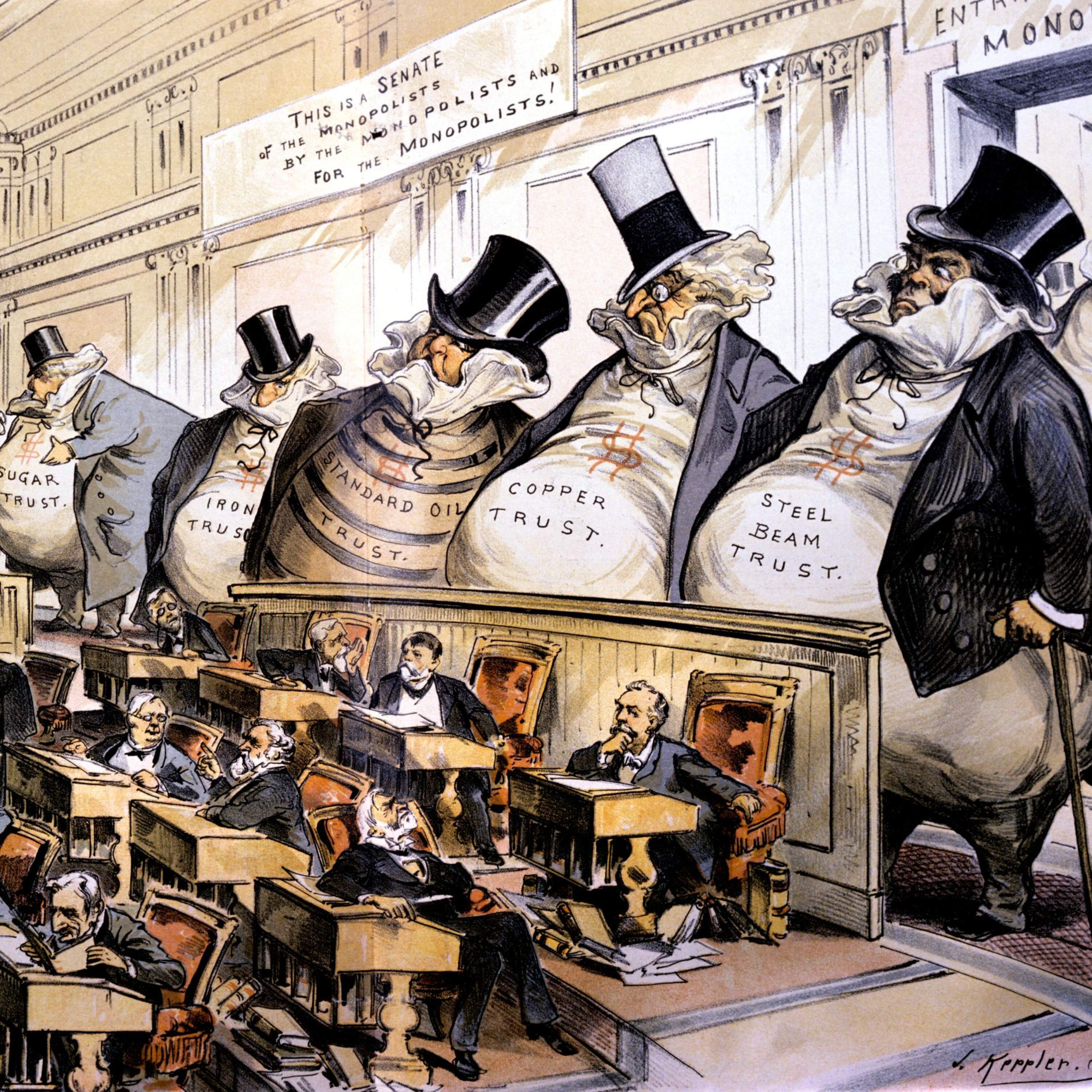We're about to lose a lot of foreign STEM workers
Related episodes:
How much international students matter to the economy
The precarity of the H-1B work visa
Could foreign workers unlock America's tight labor market?
For sponsor-free episodes of The Indicator from Planet Money, subscribe to Planet Money+ via Apple Podcasts or at plus.npr.org. Fact-checking by Sierra Juarez. Music by Drop Electric. Find us: TikTok, Instagram, Facebook, Newsletter.
Learn more about sponsor message choices: podcastchoices.com/adchoices
NPR Privacy Policy
Press play and read along
Transcript
NPR.
This is the indicator from Planet Money. I'm Waylon Wong, and I'm joined by Darian Woods, freshly back from his honeymoon.
Congratulations. Hi.
How was your trip?
It was mixed. So
most notably, I was on the beach with my now wife and she gets a text message from her boss and it's saying, are you in the country? Oh my gosh. And I'm like, what? What happened?
And so we look at the news and Donald Trump has announced that there is this new, huge $100,000 fee for new entrants into the country for people with H-1B visas.
And my wife is on an H-1B visa. Oh my gosh, this was such a huge news story last week and you were living it.
I could not escape the news. It was very frustrating just as you're trying to unwind.
And so we take this very panicked, tearful trip to the Barcelona airport and we're reconsidering like, you know, what country do we live in? It's really stressful. And
we missed the last flight out of Barcelona to the US before the deadline. Oh my gosh.
And so we're just thinking, what do we do now? Oh my gosh, Darian, what a nightmare.
Yeah, and it was actually good news that we missed that flight because we still had a couple of days on our honeymoon left.
And we later discovered that there was a clarification that actually this didn't apply to existing visa holders. It was only for new applicants for H-1B visas.
And so, yeah, we resumed our honeymoon the best we could. Oh, Darian.
Well, this was a lousy wedding gift from the Trump administration.
And Darian, actually, your wife is one of millions of workers that have come to the U.S. under this visa program in the last few decades.
It's a program designed to attract educated, credentialed foreign workers to the U.S., and now the Trump administration is changing it drastically.
Yes, so today on the show, An Economist explains the impact the H-1B visa program has had on the U.S.
economy and native-born workers, and what the new $100,000 fee could mean for the future of the program.
Support for NPR and the following message come from Indeed. Just realizing your business needed to hire someone yesterday? Speed up your hiring right now with Indeed.
Claim your $75 sponsored job credit now at Indeed.com slash indicator. Terms and conditions apply.
Support for NPR and the following message come from Edward Jones.
What does it mean to live a rich life? Maybe it's full of brave first leaps, tearful goodbyes, and everything in between.
And with over a hundred years of experience, your Edward Jones financial advisor can help. Edward Jones, member SIPC.
This message comes from Charles Schwab. When it comes to managing your wealth, Schwab gives you more choices, like full-service wealth management and advice when you need it.
You can also invest on your own and trade on Thinkorswim. Visit Schwab.com to learn more.
The H-1B visa program has been in place since 1990.
Michael Clemens is an economist at George Mason University who studies immigration. And he says the program is the primary way that high-skilled immigrants come to the U.S.
These are people with college degrees or specialized knowledge in technical fields. Essentially, it is our largest bridge between the high-skilled talent of the world and the U.S.
economy.
The program has an annual cap of 85,000 visa holders. Michael says, in a typical year, the number of people getting these visas is more than 100,000.
That's because some nonprofit and academic employers are exempt from the cap. The majority of the H-MB visa holders work in STEM fields like computer programming, scientific research, and medicine.
Many of them initially come to the U.S. as college students and then stay in the country to work.
Michael says the program has a lot of rules in place besides the annual cap.
There are bans at which the wages have to be, employers have to show that they looked intensively for a U.S.
worker for the position, and they have to pay a fee if they used a disproportionate number of
From the very beginning, a lot of American lawmakers were concerned about admitting foreigners to the U.S. labor market and what that would do.
This is an extraordinarily highly regulated program.
The H-1B visa program has changed in size over the years. Congress significantly increased the annual cap in the late 90s and cut it in 2004.
These big swings created a natural experiment for economists to study what happened in communities that saw influxes of foreign STEM workers.
And Michael says, the evidence shows that H-1B visa workers lead to more patents, more businesses getting started, and longer survival of startups.
This is not, he said, she said in the literature, this is really a universal finding of serious economic research on this subject.
Economists have shown that H-1B workers cause higher productivity for the whole U.S. economy.
It really makes sense when there is an innovation hub where people are making new startups and building entire new industries. That doesn't just mean more jobs for engineers.
It means more jobs for childcare workers and farm workers who are picking the salads that those people are eating at lunch and security workers and construction workers and everybody else.
One study published in 2015 looked at the 20-year period from when the H-1B visa was created.
And the economists concluded that the program was responsible for 30 to 50% of all the productivity growth that happened in the U.S. during that time.
Is this the kind of study that you, as a fellow economist, look on with envy? Where you're like, oh, I wish I had structured a paper like that. Oh, yes.
I mean, it's in the Journal of Labor Economics, which is the top journal of labor economists all around the world. You have to give your spleen to get into that journal.
It takes
we're not talking about a blog post where somebody put together some numbers. We're talking about a highly vetted piece of research that took years.
And many, many other studies have corroborated exactly this effect that they have found. Michael says there's there's strong consensus among economists that H-1B visas boost productivity.
A less settled question, he says, is what happens with wages? The Trump administration says the H-1B visa program undercuts the wages of American workers.
Now, Michael says there is research showing that without H-1B workers, competing American tech workers would have seen higher wages.
But he points out that this is still in an environment of wages going up across the board. A greater supply of one particular kind of worker can make the wages of directly competing workers grow less.
But growing less than other people is not the same as going down. This is one of those cases where two things can be true.
It is possible for the productivity effect of all of these talented, high-skilled foreign STEM workers working together with Americans can raise everybody's wages while not raising everybody's wages to the same amount.
Is this something that could be addressed through policy, or is that kind of like a baked-in trade-off to accept because we want all of these huge productivity gains that have been documented?
Does that make sense? Yes, it makes sense. It matters a lot, and it's not baked in.
What's crucial to understand is that the H-1B visa program needs reform.
And one of the ways that it desperately needs reform is that the H-1B visa de facto ties workers to employers.
This is because H-1B workers have to be sponsored by employers and if they want to stay longer term, their employer has to sponsor their green card. That process starts over if workers switch jobs.
Anything that ties workers to employers reduces wages because it reduces your outside option. Why don't our employers just pay us less because we could leave and go somewhere else?
H-1B workers often can't. That can depress wages in this program and that depresses wages in the industry.
So Michael thinks more flexibility in the program could help help raise wages for workers through more competition among employers. This new fee, he says, is not the answer.
The new fee is a huge bump from the $2,000 to $5,000 that employers used to pay. Many nonprofits and academic institutions can't afford $100,000.
And even if deep-pocketed tech companies could technically pay it, Michael says that's not really the point either. This tax is
much more than $100,000 because it's a risk tax and is completely arbitrary. Next week it could be $250,000 and the week after that it could be $1 million.
People aren't going to want to invest their futures in a visa program that could just be shattered at any minute based on the arbitrary whims of politicians.
And companies likewise are not going to want to invest in work streams that depend on this visa due to that uncertainty.
Meanwhile, Canada, the UK and China are adapting or launching new visa programs aimed at attracting foreign STEM workers. Exactly the kind of workers that the U.S.
is turning away. If you,
in years ahead, when you see China racing ahead in artificial intelligence and other areas, and you wanted to look back and say, well, is there anything the United States could have done differently?
There is. And this month of 2025 would be a great place to look.
Well, this month of 2025 has been a very memorable one for you, Darian. It has indeed.
I will remember September 2025 very clearly.
This episode was produced by Corey Bridges with engineering by Jimmy Keeley. It was fact-checked by Sierra Juarez.
Keikin Cannon edits the show and the indicator is a production of NPR.
Your honeymoon scrapbook is like, us going to the airport in a panic.
Here's all the speeding tickets I got in Barcelona.
This message comes from NPR sponsor Pete and Jerry's Eggs, inviting you to tag along with one of their organic pasture-raised hens as she heads out for her day in the pasture.
She and her friends start to roam and forage, hunting for tasty organic snacks.
And with 108 square feet per hen, there's plenty of space for everyone.
Under the open sky, they can hear songbirds nesting in the trees.
They bask in the sounds of nature as they prepare to lay their rich, delicious eggs.
And when the sun starts to set, the crickets begin to sing.
Time to catch one last squiggly snack before bedtime.
To learn more about Pete and Jerry's organic pasture-raised eggs and the certified humane farms where their hens roam, visit peteandjerry's.com.





